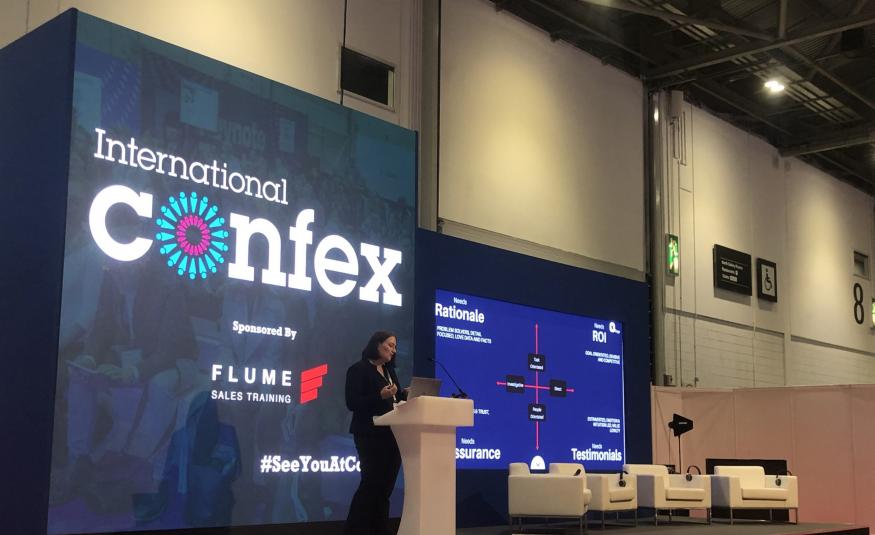Bea Johnston, Rego commercial project executive and behavioural scientist, kicked off Day 2 of International Confex at the Sales Excellence Theatre in ExCeL London.
Johnston introduced the 'Rego approach' to the audience – a way of building on the principle that people buy into people, not products or services. She explained the process of being a behavioural scientist and how to build collaborative partnerships with customers who, Johnston says, “judge the value and quality of a product by price” and that slashing the price on a product is not always the answer.
She used the analogy of customers being willing to spend more money on a well-known brand when buying ibuprofen medication, rather than settling for a cheap price, despite the results being similar, and she outlined the cyclical nature of selling a product:
- The trigger – what creates a customer need or want?
- Initial consideration set – do customers recognise the brand? Will it be the first port of call?
- Active evaluation – does the product satisfy the needs of a customer? Is the information readily available?
- The moment of purchase – were the marketing efforts successful in generating sales?
- Post purchase experience – does the product fulfil customer expectations? Are the necessary sales processes in place?
- Loyalty Loop – do customer actively advocate for the brand? Do they immediately think of my brand when they have a specific need?
Johnston said that relationships hook customers into the Loyalty Loop and, when building such relationships, it is important to remember not everyone is like you.
She outlined four kinds of buyers:
- Task orientated
- Direct
- Investigative
- People orientated
“We are all our own super-fans,” Johnston said. “We tend to like the way we do things.”
“If you can understand someone’s preferences early on in the conversation you can give them what they need, to give you what you want.”
She added: “Our brains can be tricky, sometimes the things that you think will work, won’t. Think about your customers going through a cycle with a focus on what happens post-purchase. Identify what your customer needs and adapt your interactions to facilitate this to build sustainable and loyal relationships.”





